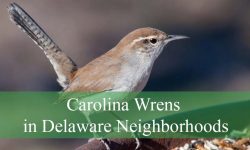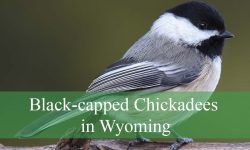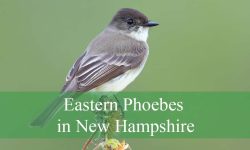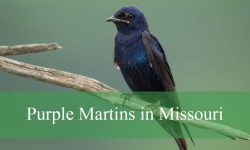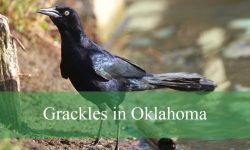Red winged blackbirds are one of the most abundant and recognizable birds across Iowa’s wetlands, prairies, and agricultural landscapes. Their sharp calls and sudden flashes of red from the males’ shoulder patches create some of the most familiar spring and summer scenes in the state. Even so, these birds display many behaviors that remain unnoticed by casual observers who only see them perched on cattails or flying over open fields.
Iowa’s mosaic of marshes, drainage ditches, wet meadows, and farm edges provides ideal habitats that support huge breeding populations. The species thrives in places where tall plants, shallow water, and abundant insects come together. Their ability to adapt to landscapes shaped by both natural processes and human activity makes them remarkably resilient.
This article explores surprising secrets about red winged blackbirds in Iowa. Their social structure, feeding strategies, communication, ecological roles, and seasonal rhythms reveal a bird far more intricate than its common appearance suggests.
Understanding Red-Winged Blackbirds in Iowa
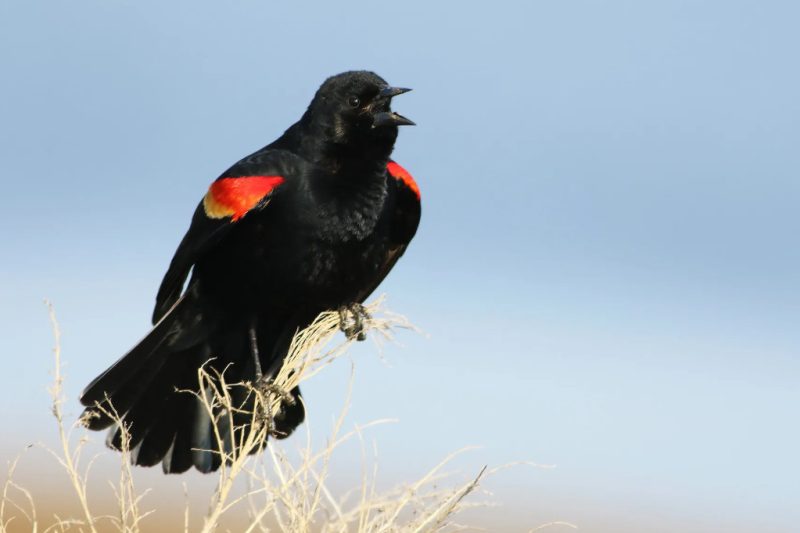
What Red-Winged Blackbirds Really Are
Red winged blackbirds belong to the Icteridae family, a group known for strong vocal abilities and complex breeding strategies. Males are easily identified by their glossy black plumage and the bright red and yellow epaulets they display during territorial defense. Females, by contrast, have brown, heavily streaked bodies that help them blend into grasses and cattails. This sexual dimorphism reduces predation risk and enables each sex to specialize in different roles.
Their structure supports their lifestyle across wetlands. Their narrow bill allows them to pick insects from stems and leaves with precision. Their wings are shaped for short, rapid flights between vegetation patches. Their legs and feet grip thin reeds firmly even in windy conditions. These adaptations make them highly effective at navigating marshy environments.
Why Iowa Provides the Perfect Habitat
Iowa’s wetland systems are ideal for breeding red winged blackbirds. Cattail marshes offer vertical stems that support nests while also providing concealment. Seasonal flooding brings nutrient rich soils that support large insect populations during spring and summer. Even artificial wetlands such as retention ponds contribute valuable habitat.
The state’s agricultural landscapes also help sustain populations. After harvest, fields provide leftover grains and seeds that birds rely on before migration. Roadside ditches and water channels often serve as miniature wetlands where blackbirds establish small colonies each year.
Where They Are Found Across the State
Red winged blackbirds occur in almost every county of Iowa. Large colonies form along river corridors, near prairie potholes, and in expansive marshlands. Smaller groups nest in agricultural edges, suburban wetlands, and grassy drainage areas. Their wide range reflects their impressive ability to adapt to environments with both natural and human influenced features.
Hidden Behaviors You Never Noticed
Their Territorial System Is Surprisingly Complex
Male red winged blackbirds defend territories with rigorous precision. Each male selects a patch of vegetation that offers perches, food, and space for multiple female nests. Their territorial displays include spreading their wings slightly, exposing their bright shoulder patches, and producing loud songs that carry across wetlands. These displays allow males to advertise their strength and warn competitors without direct confrontation.
Territory boundaries shift throughout spring as vegetation grows and water levels change. Males adjust their positions constantly, showing a high degree of awareness and flexibility. These fluid boundaries help prevent overcrowding while still maintaining stable breeding colonies.
Female Strategy and Decision Making
Females inspect male territories carefully before choosing where to nest. They evaluate vegetation density, drainage, predator presence, and food availability. If a territory is poorly defended or if environmental conditions shift, they may move to another male’s territory even after nesting begins.
Their hidden behavior during the breeding season helps protect nests from predators. Females remain extremely quiet and concealed, allowing them to raise chicks successfully in environments where visibility is limited.
Their Communication Is Layered and Nuanced
Red winged blackbirds use more vocal signals than most people realize. The iconic “conk-la-ree” is only one of many calls. Birds also produce soft chattering notes, sharp warnings, and a range of whistles that convey different levels of urgency. Visual signals also matter. Wing positions, tail angles, and subtle shifts in posture all serve as communication tools, especially in dense vegetation where vocal signals may not carry well.
Anatomy Adapted to Iowa’s Wetlands
Strong and Flexible Wing Muscles
Male red winged blackbirds display their shoulder patches using rapid wing movements supported by strong muscles. These displays help them assert dominance and attract mates across open wetlands where visibility matters as much as vocalization.
Feet Designed for Gripping
Their strong feet allow them to cling to thin cattail stems and reed stalks that sway in the wind. This balance makes them effective at navigating wetlands where stable perches are limited.
Lightweight Body for Maneuverability
Their lightweight structure allows them to fly quickly between feeding areas, nesting sites, and territorial perches. Short, frequent flights are far more common than long distance travel during the breeding season.
A Bill Built for Versatility
Their narrow, pointed bill lets them extract insects from stems, pick seeds from grasses, and capture aquatic larvae along shallow water edges. This versatility ensures they can access food throughout Iowa’s seasonal changes.
Feeding Habits Across Seasons
Insects Dominate the Summer Diet
During breeding season, red winged blackbirds depend heavily on insects. They feed on beetles, grasshoppers, caterpillars, dragonfly larvae, and spiders. This high protein diet supports rapid chick growth and gives adults the energy needed to defend territories. Wetlands provide rich insect communities that fluctuate with water levels and temperature.
Seeds and Grains in Autumn
As insects decrease in late summer, red winged blackbirds shift to seeds, grains, and leftover crops. Iowa’s harvested fields offer abundant food such as spilled corn, soybean fragments, and various grass seeds. These energy dense foods help birds gain fat reserves necessary for migration.
Foraging in Wetlands and Grasslands
Blackbirds forage methodically in shallow water, along marsh edges, and among tall grasses. Their ability to move smoothly through dense vegetation gives them access to insects that many other birds cannot reach. In grasslands, they search through seed heads and ground litter for edible plants and small invertebrates.
Flocking Behavior Outside Breeding Season
In late summer and fall, large flocks of blackbirds move across open landscapes. These groups may include multiple blackbird species that forage cooperatively. Constant communication helps the flock stay coordinated as it travels between fields and feeding sites.
Nesting and Breeding Strategies in Iowa
Selecting Nest Sites
Females build nests in cattails, sedges, or tall grasses positioned just above water. Water plays a protective role by discouraging ground predators. Nest height changes with water levels, and females show remarkable accuracy when predicting safe placement locations.
Nest Construction
The female builds a sturdy cup shaped nest using woven grasses and plant fibers. The structure is anchored securely to surrounding stems, allowing it to withstand wind and rain. The interior is lined with softer materials to protect the eggs.
Egg Laying and Incubation
Females lay three to five eggs and begin incubation immediately after the final egg is laid. Incubation lasts nearly two weeks. During this period, females remain hidden while males continue defending the broader territory.
Raising Young
After hatching, chicks depend heavily on insects for rapid development. Parents make frequent foraging trips to supply food. Once fledged, young birds move into surrounding meadows and grasslands where they continue learning essential foraging and flight skills.
Social Structure Hidden in Plain Sight
A Polygynous Breeding System
One surprising fact is that a single male may have multiple nesting females within his territory. Each female manages her own nest, and their independence helps reduce conflict within the colony. This system allows males to maximize reproductive success while providing a defended space for several families.
Subtle Boundaries Between Neighbors
Territory lines between males are flexible. Birds engage in visual and vocal exchanges that reflect ongoing negotiation of boundaries. These interactions determine how colonies expand and maintain stability.
Migration Patterns
Spring Arrival
Male blackbirds arrive in Iowa early in spring, sometimes before vegetation has fully grown. Their early arrival helps them claim the best territories. Females arrive later and settle once vegetation becomes dense enough for safe nesting.
Autumn Departure
In fall, large flocks migrate south. These flocks rely on agricultural fields to build fat reserves before traveling. Iowa’s position along major migration corridors helps maintain strong seasonal movements.
Wintering Regions
Most Iowa birds winter in the southern United States, though some travel farther if conditions are favorable.
Red-Winged Blackbirds Across Iowa Landscapes
Marshes and Wet Meadows
Marshes provide ideal breeding habitat due to the combination of shallow water and tall vegetation. These environments support large colonies that remain stable from year to year.
Grasslands and Prairies
Grasslands offer abundant insects during summer and seeds during late summer. Prairie remnants remain important feeding areas outside the breeding season.
Agricultural Areas
Harvested fields supply grains in autumn which help sustain large flocks. These fields also serve as staging grounds before migration.
Suburban Spaces
Stormwater ponds and retention basins can support small breeding colonies. Even small pockets of cattails provide opportunities for nesting.
Communication and Vocal Behavior
Territorial Songs
The “conk-la-ree” serves as the primary territorial call. Males repeat it frequently to reinforce presence and compete with neighbors. Song quality often reflects the male’s health and energy.
Female Vocalizations
Females use quieter calls to coordinate feeding, signal disturbances, and communicate with fledglings. These calls help maintain family cohesion.
Alarm and Flock Calls
Distinct alarm calls warn of predators or disturbances. Flock calls help maintain group organization during migration or when feeding in large fields.
Interactions With Other Wildlife
Birds
Red winged blackbirds frequently share habitat with marsh wrens, herons, swallows, and sparrows. Their constant vigilance benefits other species by increasing predator awareness.
Mammals
Muskrats, deer, and raccoons move through wetland habitats but rarely interact directly with blackbirds. Their movement, however, influences vegetation and water structure.
Insects
Blackbirds help regulate insect populations which contributes to the overall health of wetland and agricultural ecosystems.
Myths and Misconceptions
Myth: They Only Live in Marshes
They also inhabit grasslands, fields, and suburban wetlands.
Myth: They Are Aggressive
Their territorial behaviors are ritualized communication rather than true aggression.
Myth: Females Are Less Interesting
Females display remarkable camouflage and strategic nesting behavior essential to chick survival.
Ecological Importance
Insect Control
Blackbirds consume large quantities of insects which helps balance ecosystems and reduce agricultural pests.
Seed Dispersal
They spread seeds across meadows and wetlands, contributing to plant diversity.
Prey for Predators
They form part of the food web supporting hawks, owls, and other predators.
Indicators of Ecological Health
Stable blackbird populations reflect healthy wetlands, abundant insects, and strong vegetation cycles.
FAQs About Red-Winged Blackbirds in Iowa
Are red winged blackbirds common in Iowa
Yes. They are one of the most widespread and abundant breeding birds across the state.
What do they eat
Their diet includes insects such as beetles, caterpillars, and spiders during summer. They also consume seeds and grains especially in fall.
Do they migrate
Most Iowa populations migrate south during autumn, though migration distances vary.
Why are males so brightly colored
The red shoulder patches play a crucial role in territory defense and attracting mates.
Where do females build nests
Females build nests low in cattails, sedges, or dense meadow vegetation typically near water.
How do they communicate
They use a combination of vocal calls, visual displays, and tail or wing signals to communicate.
How long do they live
Wild individuals typically live between two and five years though some survive longer.
Conclusion
Red winged blackbirds in Iowa are far more complex than their familiar presence suggests. Their social systems, territorial displays, nesting strategies, communication behaviors, and ecological contributions reflect a bird deeply connected to Iowa’s wetlands and grasslands. Their seasonal migrations, shifting diets, and ability to adapt to changing landscapes highlight their resilience and importance within the state’s ecosystems.
Understanding these hidden secrets transforms how we view this common species. Whether perched on a cattail in spring or moving in coordinated flocks across autumn fields, red winged blackbirds bring life, structure, and balance to Iowa’s natural world.

